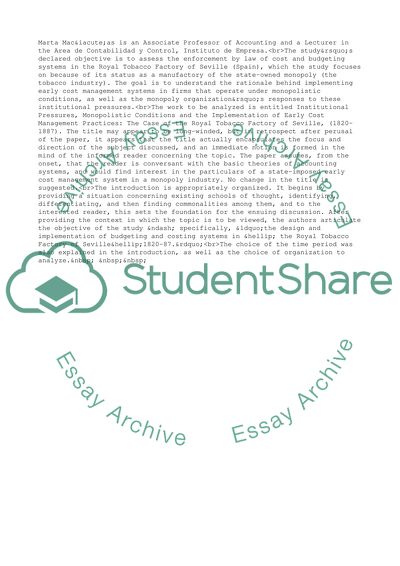Cite this document
(Institutional Pressures, Monopolistic Conditions, and the Implementat Case Study, n.d.)
Institutional Pressures, Monopolistic Conditions, and the Implementat Case Study. Retrieved from https://studentshare.org/management/1746337-institutional-pressures-monopolistic-conditions-and-the-implementation-of-early-cost-management
Institutional Pressures, Monopolistic Conditions, and the Implementat Case Study. Retrieved from https://studentshare.org/management/1746337-institutional-pressures-monopolistic-conditions-and-the-implementation-of-early-cost-management
(Institutional Pressures, Monopolistic Conditions, and the Implementat Case Study)
Institutional Pressures, Monopolistic Conditions, and the Implementat Case Study. https://studentshare.org/management/1746337-institutional-pressures-monopolistic-conditions-and-the-implementation-of-early-cost-management.
Institutional Pressures, Monopolistic Conditions, and the Implementat Case Study. https://studentshare.org/management/1746337-institutional-pressures-monopolistic-conditions-and-the-implementation-of-early-cost-management.
“Institutional Pressures, Monopolistic Conditions, and the Implementat Case Study”, n.d. https://studentshare.org/management/1746337-institutional-pressures-monopolistic-conditions-and-the-implementation-of-early-cost-management.


